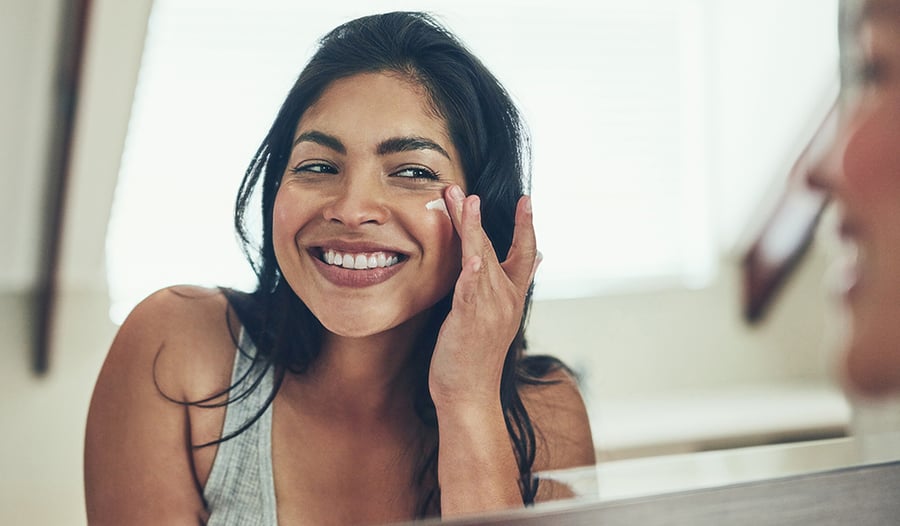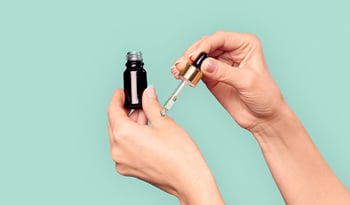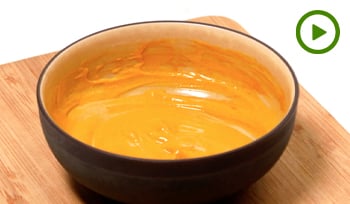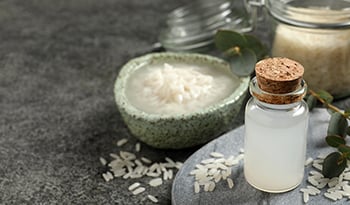8 Anti-Pollution Skin Care Ingredients You Need in Your Routine
DISCLAIMER:This blog does not intend to provide diagnosis...
- In this article:
- The Best Anti-Pollution Skincare Ingredients
- The Big Picture

With pollution on the rise around the globe, the number of people dealing with premature skin aging is sure to increase as well. Considering researchers have discovered a correlation between toxic air and premature skin aging, now is the time to be proactive in protecting your complexion. Urban dust, exhaust fumes, indoor volatile chemicals, cigarette smoke, atmospheric gases, and heavy-metal emissions, as well as infrared rays and blue light, are the key culprits creating air pollution that will ultimately have negative effects on your health, including your skin.
When exposed to pollutants, the skin's surface will create free radicals. Eventually, the level of free radicals becomes too much for your skin’s natural defense mechanisms, and the skin cells move into a state of oxidative stress. Now the skin becomes more sensitive to hyperpigmentation, dull complexion, and signs of premature aging.
Not to fret! There is good news if you read between the smog. Many ingredients found in skin care products may protect your skin from pollution.
The Best Anti-Pollution Skincare Ingredients
Do you need an anti-pollution skincare product? The chances are you already have these ingredients in your skincare cabinet.
1. Malachite
Historically present in large supply in the Ural Mountains of Russia, today most of the malachite originates in Africa. It can be found in various countries around the globe, including Mexico, Australia, Congo, Zambia, and Namibia. It has been used as a pigment in green dyes and ornamental stone for millennia.
A copper-rich pollution magnet and heavy metal scavenger, malachite may be helpful in cleansing and purifying the skin. It functions as an antioxidant, which may protect the skin from environmental stressors like pollution.
Known in ancient Egypt as the guardian stone, the blue-green semiprecious stone malachite is rich in copper, which may benefit skin health as an antioxidant that protects against smoke and ozone. Working to detoxify the skin, malachite may be effective at reducing pore size while potentially purifying and freshening the skin.
2. Activated Charcoal
Charcoal that has been treated with oxygen at very high temperatures to make it more porous is called activated charcoal. Used since ancient times, activated charcoal is a black, flavorless, odorless powder that is mostly used to treat drug overdoses and poisonings today due to its absorbent nature.
Sold in both powder and supplement form, the porosity of activated charcoal may help to draw pollutants and toxins out of the skin. It could act as a natural chemical peel while being less harsh on the skin. When added to your skincare routine, activated charcoal may help to absorb excess dirt, oil, and other pollutant substances from the face. As a result, your skin may appear renewed and look more clear. This would result in improved skin texture and complexion appearance. Dark spots could also appear less visible.
Leave the activated charcoal on for 10 to 30 minutes and wash it off with warm water. If residual charcoal is left on your face, mix baking soda and warm water to rinse it off. However, be sure not to overuse activated charcoal on your face, keeping it to once or twice a week. More frequent use could dry out your skin.
3. Vitamins
Many vitamins could be helpful to the skin. Specifically, vitamins A, C, and E are especially known for their antioxidant activities, which may promote longevity due to their potential anti-aging properties for the skin.
Vitamin A
Antioxidants fight free radicals caused by pollution. Vitamin A comes from two sources, retinoids, including retinol, from animal sources, and carotenoids, including beta-carotene, from plant sources. Retinol can be found as a key ingredient in many skincare products. Known for potentially reducing fine lines and wrinkles, retinol may help reverse some of the damaging effects of pollution and free radical production.
Vitamin C
A nice dose of vitamin C could be one of the best lines of defense from the free radical–induced damage pollution can cause. Most notable for helping to brighten and possibly improve hyperpigmentation, vitamin C typically can be found between 10 and 20 percent concentrations in skin care products. Concentrations over 20 percent are more likely to cause minor skin irritation. Vitamin C can also have a hydrating effect on the skin by decreasing the transepidermal water loss (TEWL). A decreased TEWL may help the skin retain moisture more effectively.
Achieving a brighter more supple complexion with vitamin C use is a potential way to implement anti-pollution skin care into your routine. By smoothing the skin’s surface and fading hyperpigmentation, vitamin C could help brighten the dull complexion pollution has been associated with.
Vitamin E
This fat-soluble vitamin is a powerful anti-inflammatory agent that may help to prevent damage after UV exposure to the skin. Vitamin E may reduce various signs of UV-induced skin inflammation including redness, edema, swelling, and thickness.
Also known for its photoprotective effects, vitamin E has strong antioxidant action that could prevent inflammation from occurring, not simply treating it after it is already present. Vitamin E has great potential to reduce pollution-induced skin irritation and inflammation.
4. Chinese Herbs
Here are a few Chinese herbs that may provide benefits to your skin.
Ginseng
This popular traditional Chinese medicine (TCM) herb may have immense benefits to the skin and has found its way into many skincare products in modern times. In addition to promoting collagen production, ginseng may also prevent UV damage while rejuvenating the skin. This makes it an attractive anti-pollution and, therefore, anti-aging Chinese herb.
Drinking the tea and applying ginseng topically are both potential ways to reap the skincare benefits of ginseng.
Green Tea
Rich in bioflavonoids and catechins, green tea may help increase skin elasticity and improve uneven skin tone. These active constituents in green tea act as powerful antioxidants and may protect your skin from damaging free radicals produced by pollution.
Licorice Root
Prized for its ability to calm skin blemishes and decrease inflammation in the skin, licorice root is another TCM herb that could elevate your anti-pollution skincare regimen.
Chinese Wolfberries (Goji Berries)
A natural source of zinc oxide, a common ingredient used in nontoxic sunscreen products for SPF protection, Chinese wolfberries naturally block harmful UVA and UVB rays from the sun. Also thought to boost collagen and elastin production in the skin, goji berries offer more than anti-pollution skin benefits.
4. Gingko biloba
High in antioxidants, gingko may help to minimize premature skin aging due to free radical damage caused by pollution.
Adding TCM herbal supplements to your skincare routine could help you reap the benefits of their anti-pollution effects on your skin.
5. Lutein
An impressive antioxidant, lutein may protect the skin from blue light and other high-energy sources that lead to oxidative damage to the skin. However, because the body does not produce lutein, it must be consumed through either supplements or food.
The sun is the greatest source of blue light, which is also emitted by computer monitors, smartphones, laptops, tablets, fluorescent bulbs, and LED screens such as those found on modern-day televisions. Researchers have found that blue light from electronic devices can lead to changes in your skin cells, including cell shrinkage and death. Even more startling is that these changes can be seen in as little exposure time as 60 minutes.
Incorporating lutein into your anti-pollution skincare routine may help reduce the negative effects of blue light exposure.
6. Zeolite
Zeolite is one of nature's few negatively charged minerals containing mostly silicon and aluminum compounds. This negative charge may help it to bind and remove toxins from your skin. Zeolite is a powerful mineral that may draw out and remove impurities while potentially protecting your skin from free radicals.
An effectual exfoliant, zeolite, could help remove dead skin cells from the surface, revealing a healthy, new layer of skin free from the damaging effects of pollution.
7. Kaolin Clay
Recognized for its ability to absorb excess oil, aka sebum, while also drawing out impurities and toxins, kaolin clay could have plenty of anti-pollution properties. Thought to be the mildest, most gentle clay used in skincare, kaolin should not cause any redness or irritation. Often applied as a mask, kaolin also has antibacterial properties, making it a good option for those who suffer from acne in addition to preventing or addressing any skin damage caused by pollutants.
Kaolin clay could also be used as a nontoxic and hypoallergenic deodorant due to its ability to help absorb sweat and neutralize odor.
8. Chemical Exfoliator
Using a chemical exfoliator elevates your cleansing routine by helping to increase cell turnover and ensure all damaging free radicals are swept away from your skin. Chemical exfoliation requires an acid that increases the cell turnover cycle to get rid of dead skin cells. Other benefits of chemical exfoliation include unclogged and minimized pores, brighter skin, and a refined and smooth skin texture. Hyperpigmentation or dark spots may also be lightened, which helps to even out skin tone.
The Big Picture
No matter how you choose to protect your skin from the damaging effects of pollution, minimizing your exposure to UV light by wearing SPF protection and eliminating causes you can control, such as proximity to cigarette smoke, can help make a difference.
With the rising pollution and blue light exposure as a reality, you have many anti-aging options to help you and your skin achieve good health and longevity.
References:
- Al-Niaimi F, Chiang NYZ. Topical vitamin C and the skin: mechanisms of action and clinical applications. J Clin Aesthet Dermatol. 2017;10(7):14-17.
- Chacko SM, Thambi PT, Kuttan R, Nishigaki I. Beneficial effects of green tea: a literature review. Chin Med. 2010;5:13. Published 2010 Apr 6. doi:10.1186/1749-8546-5-13
- Droy-Lefaix MT. Effect of the antioxidant action of Ginkgo biloba extract (EGb 761) on aging and oxidative stress. Age (Omaha). 1997;20(3):141-149. doi:10.1007/s11357-997-0013-1
- Juturu V, Bowman JP, Deshpande J. Overall skin tone and skin-lightening-improving effects with oral supplementation of lutein and zeaxanthin isomers: a double-blind, placebo-controlled clinical trial. Clin Cosmet Investig Dermatol. 2016;9:325-332. Published 2016 Oct 7. doi:10.2147/CCID.S115519
- Keen MA, Hassan I. Vitamin E in dermatology. Indian Dermatol Online J. 2016;7(4):311-315. doi:10.4103/2229-5178.185494
- Mastinu A, Kumar A, Maccarinelli G, et al. Zeolite clinoptilolite: therapeutic virtues of an ancient mineral. Molecules. 2019;24(8):1517. Published 2019 Apr 17. doi:10.3390/molecules24081517
- Mukherjee S, Date A, Patravale V, Korting HC, Roeder A, Weindl G. Retinoids in the treatment of skin aging: an overview of clinical efficacy and safety. Clin Interv Aging. 2006;1(4):327-348. doi:10.2147/ciia.2006.1.4.327
- Puri P, Nandar SK, Kathuria S, Ramesh V. Effects of air pollution on the skin: a review. Indian J Dermatol Venereol Leprol. 2017;83(4):415-423. doi:10.4103/0378-6323.199579
- Rajabloo Z, Farahpour MR, Saffarian P, Jafarirad S. Biofabrication of ZnO/malachite nanocomposite and its coating with chitosan to heal infectious wounds. Sci Rep. 2022;12(1):11592. Published 2022 Jul 8. doi:10.1038/s41598-022-15768-5.
- Williams LB, Haydel SE. Evaluation of the medicinal use of clay minerals as antibacterial agents. Int Geol Rev. 2010;52(7/8):745-770. doi:10.1080/00206811003679737
- Yang R, Yuan BC, Ma YS, Zhou S, Liu Y. The anti-inflammatory activity of licorice, a widely used Chinese herb. Pharm Biol. 2017;55(1):5-18. doi:10.1080/13880209.2016.1225775
- Yang Y, Ren C, Zhang Y, Wu X. Ginseng: an nonnegligible natural remedy for healthy aging. Aging Dis. 2017;8(6):708-720. Published 2017 Dec 1. doi:10.14336/AD.2017.0707

 By Dr. Carlie Biggins, N.D.
By Dr. Carlie Biggins, N.D.


